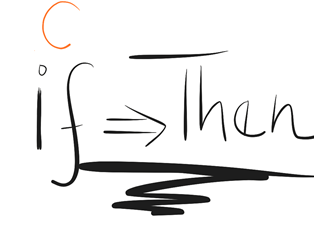OBJECTIVES IN INSTRUCTION:
Learning Theories and principles aim at bridging the
gap between instruction and practice. In lesson planning, objective statements
play a major part. By analogy we can say that clear objectives writing in lesson planning
is to classroom instruction what a constitution is to a republic. They both throw
a light on the foundations of good practices upon which actions are to be validated and disfunctioning or misapplications to be assessed.
There are many arguments that support clear and
appropriate statements of objectives in instruction. This is being
discussed by the article the "best choice according ... to experts". Objective statement helps to match teaching practice and
final outcomes. It can help learning less alienating as students enter in a classroom with some expectations, and learners, specially adults can gain more focus and attention by knowing the lessons ojectives
The ABDC objective model is mainly centered around four criteria, however there are some essential principles of Blooms taxonomy that underlie the conception and application of this model .
A for Audience: When writing objectives, it is essential to mention who each lesson is intented for. Instruction content is based on students' needs. Also, according to type of students, the teacher will have to focus teaching on specific aspect. This is particularly important because in some teaching contexts some teachers are left to design courses from scrcatch with little or no information about syllabus. This is when Bloom's taxonomy or one of its revised form" come into play. Bloom's taxonomy helps to categories the learning domains into: Afective, Psychomotor and Cognitive. Therefore, the teacher can tally the students needs to the different learning domains and project the effective instructional materials and evaluations.
B for Behavior. Understanding Bloom's taxonomy is also key to the second criterion of the ABDC model.
Whenever writing objectives, the teacher must ensure to include the behavior which the students should be performing. Accoording to Bloom's taxonomy, for learning to take place, the learner should be performing certain task which can be categories into LOT ( low thinking orders and HOT (high thinking order). This is expressed in terms of verbs which the process can be (seen or smell, or heard). From a behaviorist point of view learning has not taken place until behavior is change. Adding a behavior criterion helps to track progress an change in action.
Whenever writing objectives, the teacher must ensure to include the behavior which the students should be performing. Accoording to Bloom's taxonomy, for learning to take place, the learner should be performing certain task which can be categories into LOT ( low thinking orders and HOT (high thinking order). This is expressed in terms of verbs which the process can be (seen or smell, or heard). From a behaviorist point of view learning has not taken place until behavior is change. Adding a behavior criterion helps to track progress an change in action.
C for condition: One assumption of the ABDC model is that any learning that has to take place is subject to certain conditions. These can be the enrironmental, time, number of activities.
 D refers to the level of performance at which the teacher expects the learner to succeed a given task after instruction. This has to do judging a successful teaching practice. It's important to state to what extent the students are expected to succeed with respect to the targeted learning outcomes.
D refers to the level of performance at which the teacher expects the learner to succeed a given task after instruction. This has to do judging a successful teaching practice. It's important to state to what extent the students are expected to succeed with respect to the targeted learning outcomes.
The cornerstone of many approaches to learning is Bloom's taxonomy. One of its merits is to map out the learning domain and categorize learning behaviors in observable active processes. Through the years, the orignal taxonomy has been revised in the 1990s by Anderson and Krathwohl (2001) and more recently revisited by A Churches to encompass the new trends and learning behaviours. These have been referred to as Bloom's revised Taxonmy and Bloom's Digital Taxonomy. If we look at the behaviors describes in the three taxonomies we remark that besides the previously stated learning processes, the digital digital taxonomy offers a great deal of new skills and behaviors to explore. Being apple to succesfully integrate these new learning dimensions in teaching is the stake in learning and teaching. As a teacher who is enrolled in this course the challenge is to integrate these technology related behaviors and processes in our teaching to meet our learners needs and our educational phylosophies in this century.




No comments:
Post a Comment